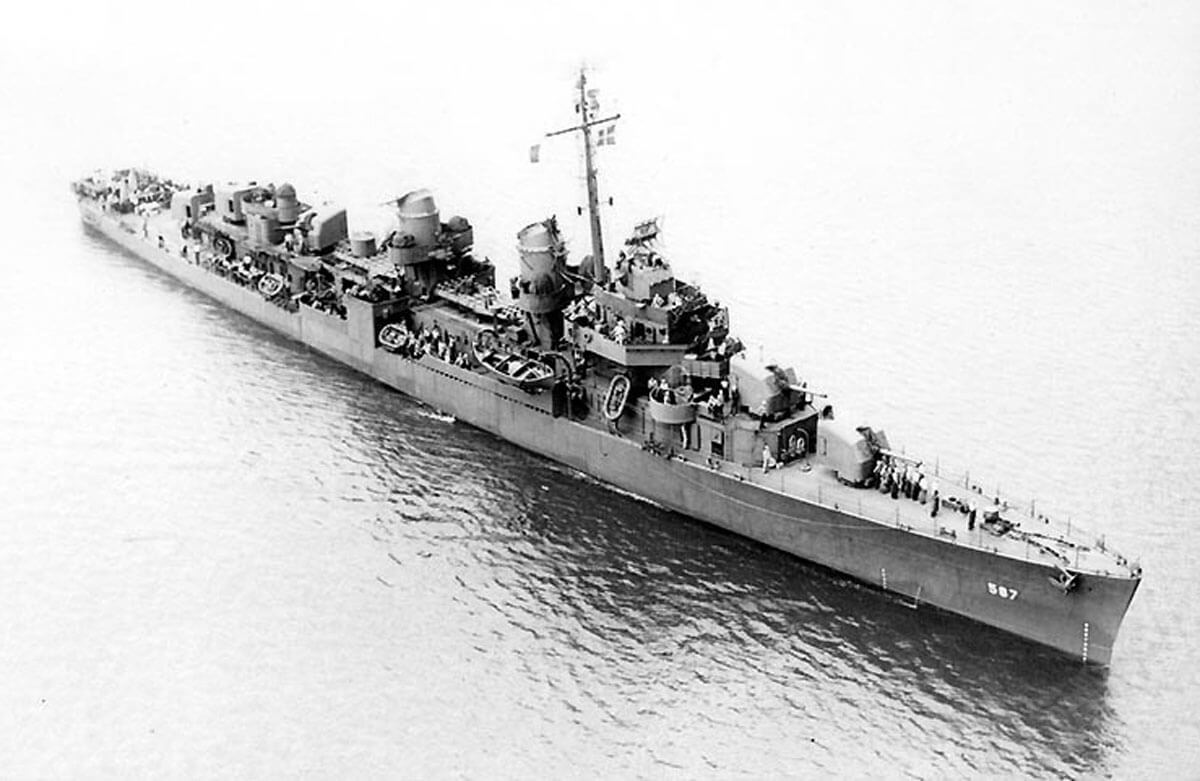Asbestos Exposure on the USS Bell (DD-587)

Hull Number: DD-587
Type: Destroyer
Class: Fletcher
Built: North Charleston, SC
This Fletcher-class Destroyer was built during World War II by the Charleston Navy Yard of North Charleston, SC. Measuring just over 376 feet from bow to stern, the ship carried a complement of 329 officers and men. It was commissioned by the U.S. Navy in March of 1943, and immediately assigned to patrol duty in the Atlantic.
After nearly half a year at sea, it was transferred to the Pacific Theater, where it took part in assaults on Kavieng, New Ireland, the Marshall Islands, and Okinawa, amongst others. After the war, it briefly assisted in the occupation of Okinawa, China, and Korea before returning to its home port in San Francisco. The vessel earned twelve battle stars over the course of the war, and was decommissioned shortly after its end, in June 1946.
Navy veterans who were assigned to the USS Bell were likely exposed to asbestos over the course of their regular duty. Asbestos was an extremely common shipbuilding material between the 1930’s and 1970’s, and could be found in equipment such as boilers, turbines, pumps, valves, and electrical components.
Materials including valves and gaskets were also often wholly made from asbestos. Sailors who served in the ship’s engine and boiler spaces – including Boiler Tenders, Machinist’s Mates, and Firemen – were especially at risk, as these areas contained a particularly high concentration of asbestos.
The companies who provided the Navy with these asbestos products were typically aware that asbestos was a carcinogen, and that exposure could lead to mesothelioma and lung cancer. Despite this foreknowledge, none of the asbestos companies ever warned those serving aboard the USS Bell and other ships of the era.
Victims of asbestos, including those diagnosed with mesothelioma, asbestosis, or lung cancer caused by asbestos exposure, have a right to pursue compensation. Settlements can offset or cover costly medical care, and may provide additional sums for pain and suffering. It is important to contact legal representation soon after a mesothelioma diagnosis is made however, as the law places limits on the time in which a lawsuit may be filed.
